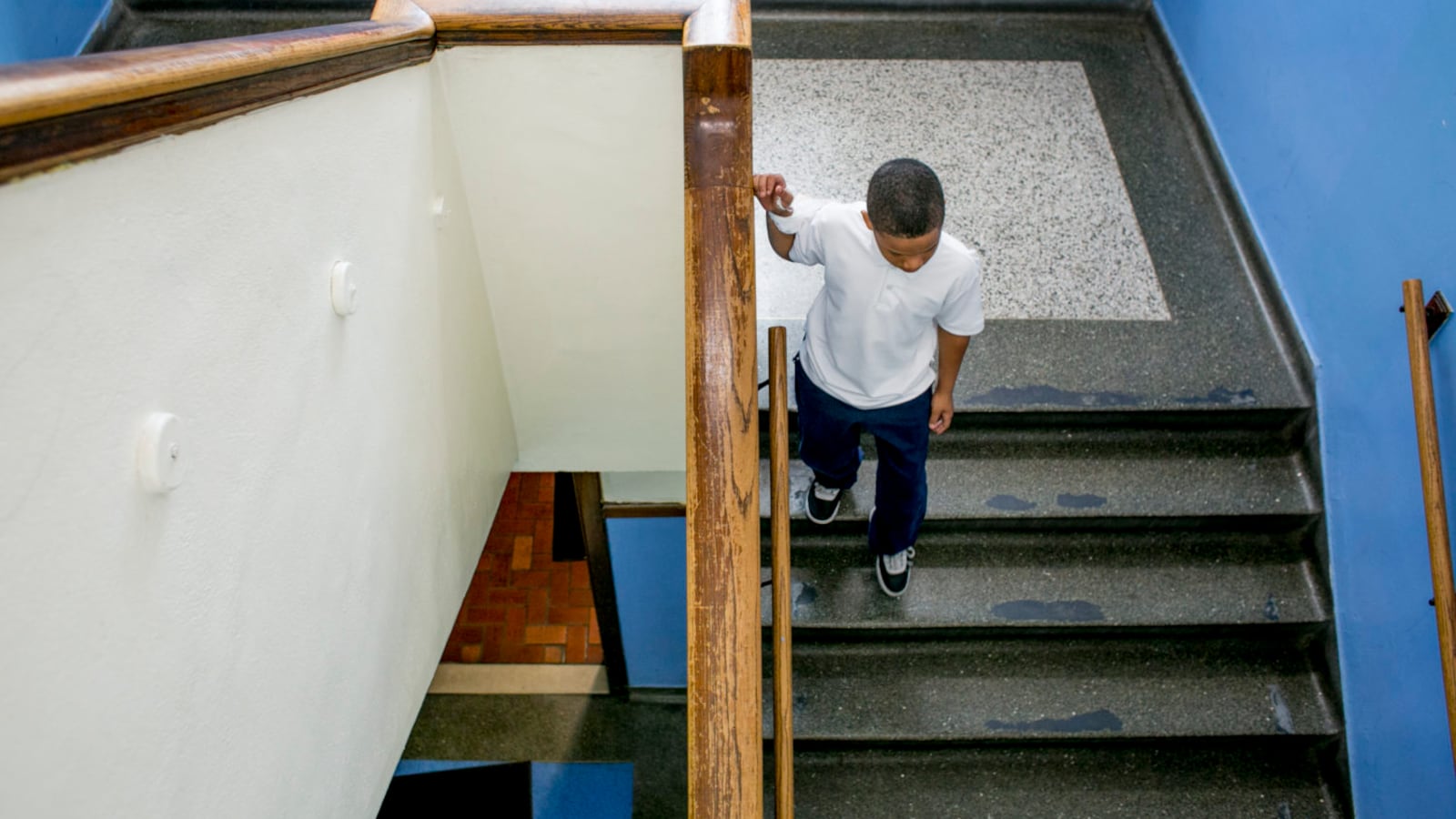New apartment buildings, new breweries, expanding public transit: central Denver is booming.
Greenlee Elementary, a school just southwest of downtown in the Lincoln Park neighborhood, is not. Over the last few years, its enrollment has dropped precipitously, falling from nearly 400 students in 2014 to 278 students in 2018.
Principal Sheldon Reynolds is the first to acknowledge that the decline is the result of many factors, including the school’s academic struggles. But he also thinks one contributor is the area’s gentrification and the accompanying displacement of some residents, as older public housing units have been replaced with mixed-income residences and rents soar.
“It’s changed Denver so much,” he said. “Places that used to be affordable, they’re no longer affordable.”
New research quantifies that trend, showing that as neighborhoods nationwide gentrify, they tend to lose students, though at a slower rate than Greenlee experienced.
Those declines in enrollment may come because gentrification displaces some families, while new entrants don’t have children or are skeptical of neighborhood schools. Gentrification also often coincides with an expansion of alternatives to neighborhood schools, as has happened in Denver, where families can choose from a menu of district and charter school options.
The latest findings also show that gentrification is relatively rare. But where it does happen, the changes have real — and complex — consequences for students, as schools may be forced to grapple with budget cuts but neighborhoods also see declining crime rates.
“It really is a mixed bag,” said Francis Pearman, the Stanford professor who conducted the new study. “There’s no clear story to tell.”
Pearman examined neighborhoods in urban and suburban areas across the U.S. He considers a neighborhood as subject to gentrification if, in 2000, it had a low average household income and had seen relatively little new housing built in the previous decades. Then he examined whether, by 2014, a neighborhood had seen an influx of college-educated residents and an increase in real housing values.
By this definition, less than one in five urban and suburban public schools were in “gentrifiable” neighborhoods to begin with. Of those, about one in five did in fact gentrify.
That means a total of 4% of public schools in metro areas experienced gentrification between 2000 and 2014. Looking just within cities, the share approaches 8%, aligning with other recent national studies showing that gentrification is a relatively rare phenomenon, with substantial variation from city to city.
When neighborhoods do gentrify, Pearman found, local district schools tend to lose students. The average drop is small: 17 students, or 3% of enrollment. This comes from a decline in low-income and Hispanic students, with no countervailing increase in affluent or white students.
These findings aren’t surprising. Pearman’s prior work has shown that gentrification is more likely when an area offers a lot of school choices; other research has found that in many cities, neighborhoods have grown racially integrated but schools have not.
Reynolds has felt the strain of trying to recruit the neighborhood’s new families to his Denver school — officially known as the Center for Talent Development — where most students are black or Hispanic and from low-income families. Some potential families overlook the school based on low test scores, he says. And he thinks race plays a factor, too, as white families are often hesitant to send their child to a school with few other white kids.
“I think it is a real issue,” said Reynolds. “We try to address it as best as possible, just talking with parents about diversity that we treasure in the schools,” and offering opportunities to visit the school and see it in action, he said. That’s the approach one Indianapolis school in a gentrifying neighborhood is taking, too — opening up its playground to familiarize new residents with the school community and hopefully recruit new students.
The latest research does offer an instance where gentrification doesn’t bring enrollment declines: when the gentrifiers are predominantly non-white. (Pearman’s particular definition of gentrification is focused on education levels. He finds gentrifiers are mostly non-white in about one in five neighborhoods.) Other research, he noted, has shown that black gentrifiers are more likely to invest in existing community institutions than white gentrifiers.
So where does all of this leave the children from gentrified neighborhoods?
One major study released last year found that gentrification improved the college completion rates of some children who stay in the area — specifically, those of less-educated homeowners. (Other children saw no change.)
There’s also evidence that crime declines in gentrifying neighborhoods, likely benefitting children who remain.
Reynolds has seen this firsthand. He used to be wary of sending his young students to play at a nearby park that was perceived as unsafe, but now he does so without a second thought. Lockdowns because of local crime are also less frequent, he said.
Not surprisingly, though, gentrification appears to displace existing residents. The effect is small — mobility among low-income families is high regardless — but frequently changing schools has been linked to worse academic outcomes for children.
Another recent paper linked gentrification in New York City to higher rates of anxiety among children. And a national study that Pearman has in the works finds that racial disparities in school discipline increase as neighborhoods gentrify.
“The connection between gentrification and children’s well-being, education opportunities — it’s really complicated,” Pearman said. “In reality, it can be good for some folks and bad for others. Moreover, it can be good for some people in some ways and bad for those same people in other ways.”


